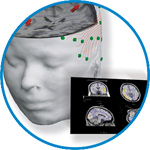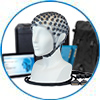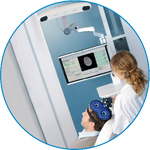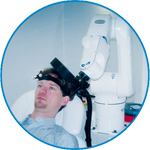- Home
- About ANT
-
Products

asa
asa is a highly flexible EEG/ERP and MEG analysis package with a variety of source reconstruction, signal analysis and MRI processing features.
.jpg)
eego mylab
The new frontier in multimodal brain research. With up to 16 kHz sampling rate, 256 EEG channels and unique software features, eego mylab gives you an unprecedented in-depth understanding of the human brain.

eego sports
eego sports offers complete freedom to collect high-density EEG data, bipolar EMG signals, and a variety of physiological sensor data, wherever and whenever required, with publish quality data in less than 15 minutes!

waveguard net
The waveguard net sets a new standard for research applications requiring high-density EEG data acquisition with quick preparation time, high flexibility, and subject comfort.

visor2
Our new and upgraded visor2 solutions integrate all the latest technologies for navigated rTMS, dual-coil navigation support, EEG-TMS recordings and pre-surgical evaluation for the highest quality in research and clinical procedures.

powerMAG ANT
The PowerMAG ANT 100 rTMS stimulator is designed for the specific needs of high-end TMS applications. Powerful high-frequency TMS as well as high precise single pulse and repetitive pulse protocols are combined in one single device.

xensor
xensor offers the solution for digitization of 3D electrode positions. xensor takes care of the whole procedure; it records, visualizes and stores positions acquired with a dedicated digitizer.

waveguard original
waveguard original is the cap solution for EEG measurements compatible with fMRI, MEG and TMS system. Use of active shielding guarantees performance in even the most demanding environments.

waveguard connect
waveguard connect EEG caps are a perfect match for hospitals and institutes aiming at reliable EEG, maximum uptime and great patient comfort! For optimal signal quality, the electrodes are made of pure, solid tin.

waveguard touch
waveguard touch is a dry electrode EEG cap. The unique Ag/AgCl coated soft polymer electrodes provide stable, research-grade EEG signals while maintaining subject comfort. The combination of these innovative dry electrodes and the industry-leading waveguard cap makes waveguard touch the best solution for dry EEG.

smartmove
smartmove allows planning of a complete TMS session ahead by defining stimulation sites based on anatomical MRI information and functional information like fMRI, PET or EEG/MEG.
Stay - References
- Support
- Events
- News
- Contact Us
You are here
Evaluation of somatosensory cortical processing in extremely preterm infants at term with MEG and EEG
Evaluation of somatosensory cortical processing in extremely preterm infants at term with MEG and EEG
Objective
Prior studies on extremely preterm infants have reported long-term prognostic value of absent secondary somatosensory cortex (SII) responses in magnetoencephalography (MEG) at term. The present work i) further examines the potential added value of SII responses in neonatal neurological evaluation of preterm infants, and ii) tests whether SII responses are detectable in routine neonatal electroencephalogram complemented with median nerve stimulation (EEG-SEP).
Methods
Altogether 29 infants born <28 gestational weeks underwent MEG, MRI, and neonatal neurological examination at term age, and Hempel neurological examination at 2-years corrected age. Term-age EEG-SEP was available for seven infants.
Results
While in neonatal neurological examination severely abnormal finding predicted unfavorable outcome in 2/2 infants, outcome was unfavorable also in 3/9 (33%) moderately abnormal and in 5/18 (28%) mildly abnormal/normal infants. Of these eight infants four had unilaterally absent SII responses in MEG, compared with only two of the 24 infants with favorable outcome. Furthermore, SII responses (when present in MEG) were also usually detectable in EEG-SEP.
Conclusions
Complementing clinical EEG recording with SEP holds promise for valuable extension of neonatal neurophysiological assessment.
Significance
Multimodal study of EEG and sensory evoked responses is informative, safe, and cheap, and it can be readily performed at bedside.
Highlights
•Secondary somatosensory cortex (SII) responses complement neonatal neurological evaluation in predicting neurodevelopmental outcome in extremely preterm infants.
•SII responses can be measured with MEG as well as with the routinely available bedside EEG-SEP recordings.
•Use of sensory responses as a part of routine EEG studies holds promise to significantly expand early neurophysiological evaluation of neonates after adversities.
Click here for more information.

 Read more
Read more.jpg)




